If you have allergy offending trees or shrubs in your neighborhood (probably because of a very common case of botanical sexism), one of the best things you can do to protect yourself from the pollen is to plant a tall, dense hedge. If placed on the windward side of your property, the privacy hedge will reduce your allergy exposure by filtering and blocking pollen particles. The density will help you to create a pollen-reduced oasis – an allergy-free garden. Hedges that filter allergens are the best outdoor plants for allergy sufferers – the trees and shrubs listed here are the best plants for allergy sufferers.
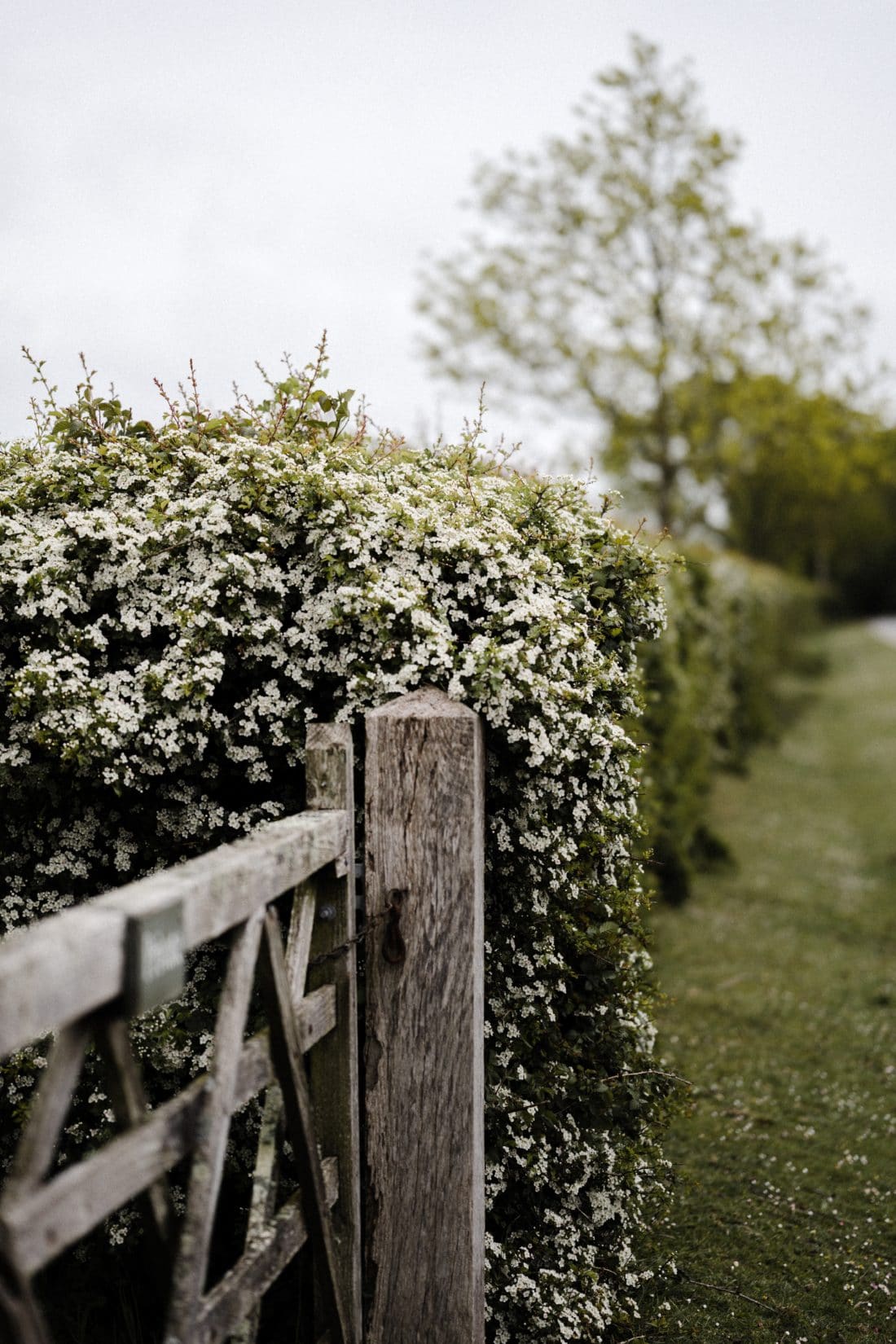
That said, many common hedges are problematic for allergy sufferers. Privet, male yew, male juniper, male willow, mountain laurel, and any type of cypress, olive, and arborvitae are all poor choices as they tend to be quite allergenic.
Using the OPALS scale as presented in Thomas Ogren’s book, The Allergy Fighting Garden, you can find out how allergenic a plant is. The book contains comprehensive plant lists and measures their allergenic impact on a scale of 1-10.
I chose these 5 shrubs (below) for their low (allergy-free) score as well as for their ability to create a dense hedge that can block and filter pollen dust that often travels in ground currents.
But we can’t forget pretty! There are no boring or ugly plants here – each of these allergy-free garden shrubs is also gorgeous.
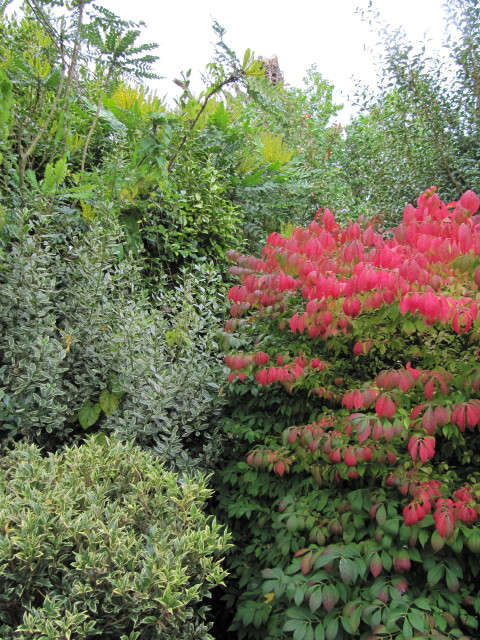
Planting note: If you can’t find a plant locally, it may be because it is invasive in your area. Invasive plants are not carried by local retailers. You can check your local invasive species list here.
5 Pretty Shrubs to Create a Privacy Hedge and an Allergy-free Garden
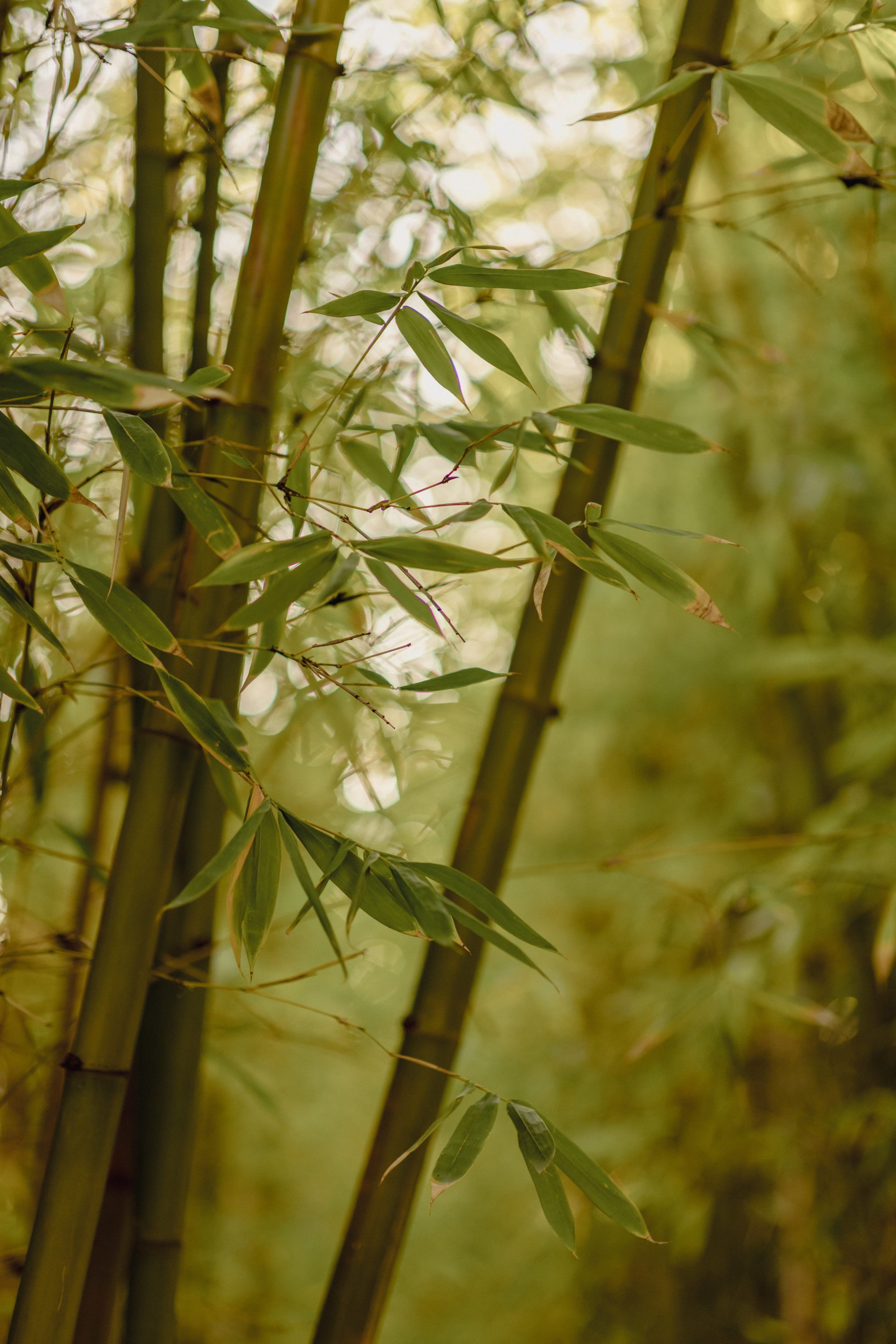
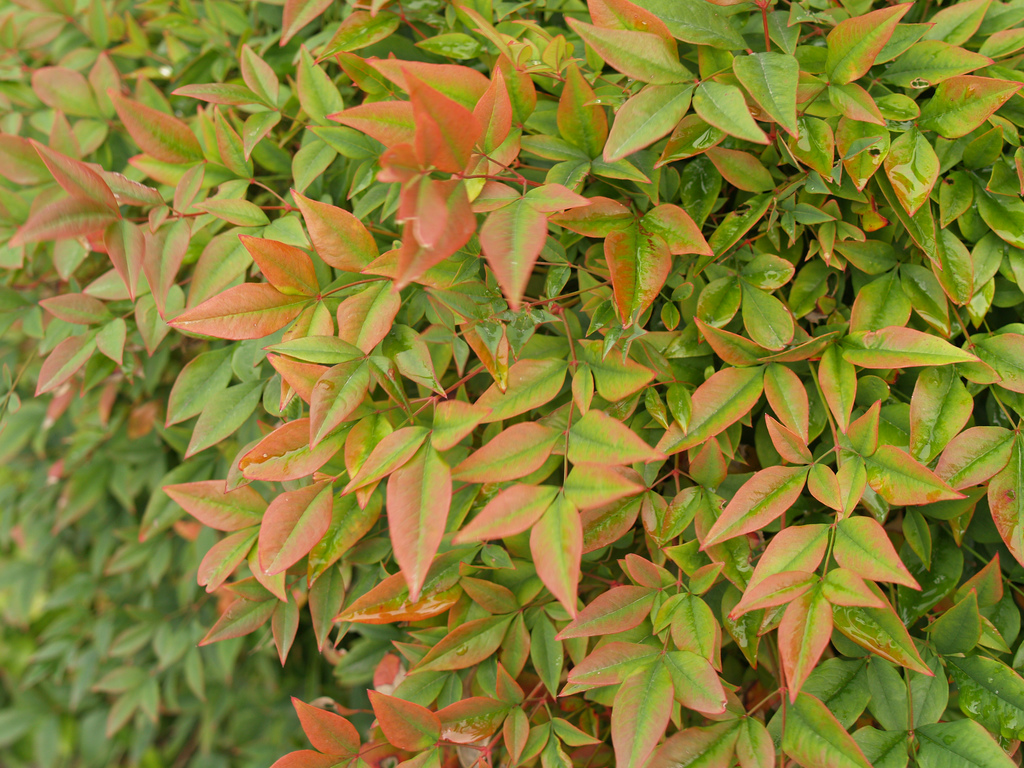
Allergy Friendly plants: Bamboo
Most bamboo varieties are monocarpic which means they bloom only once in their lives, then they go to seed and die – thus making them one of the best outdoor plants for allergy sufferers. Bamboo has a very low allergy potential. There are many varieties, but care needs to be taken to make sure they do not become problematic spreaders.
This bottom image is of heavenly bamboo (Nandina domestica) which is a popular (but not very tall) variety. It is more shrubby that other varieties and looks different those that carry the typical Bamboo pole look (above).

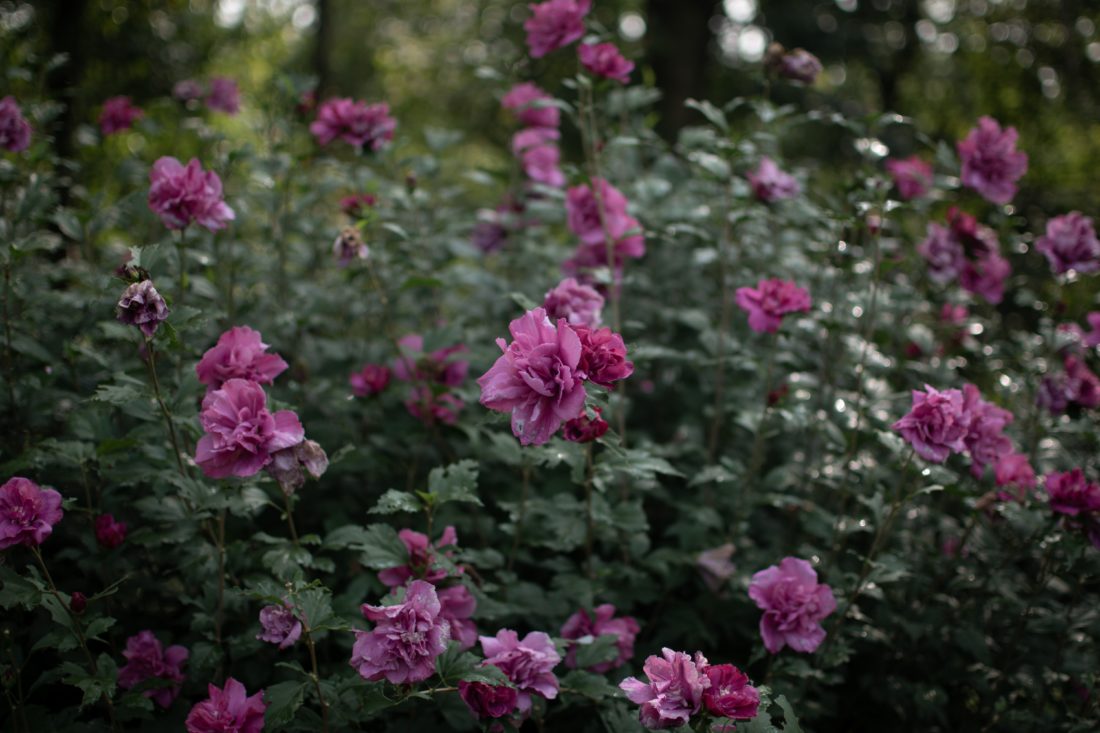
Allergy-Friendly Garden Shrub: Hibiscus
All plants in the mallow family are good for allergy sufferers. But the hardy hibiscus, commonly known as Rose of Sharon, is particularly nice for northern climates. These beautiful flowering shrubs come in a variety of colors. They can get to 12 feet tall and are very tolerant of pollution, varied light conditions, and poor soil.
The top image from Proven Winners is a particular variety called Pink Chiffon and it gets quite tall. Other varieties have flowers that range from red to pink and purple and some also have leaf color that can be deep burgundy.

Hypopallergenic Garden Shrub: Italian Buckthorn
Rhamnus alaternus is a good evergreen shrub with dense dark green glossy foliage throughout the year. The small spring-blooming greenish-yellow flowers produce reddish fruit that ages to a dark purple color. Grows fast (2–3 feet/ year) and will max out at 15-feet-tall. Will tolerate full sun to part shade. Hardy in zones 7-10.
The variety Rhamnus alaternus ‘Argentovariegata’ has attractive variegated leaves and is often a popular garden choice.
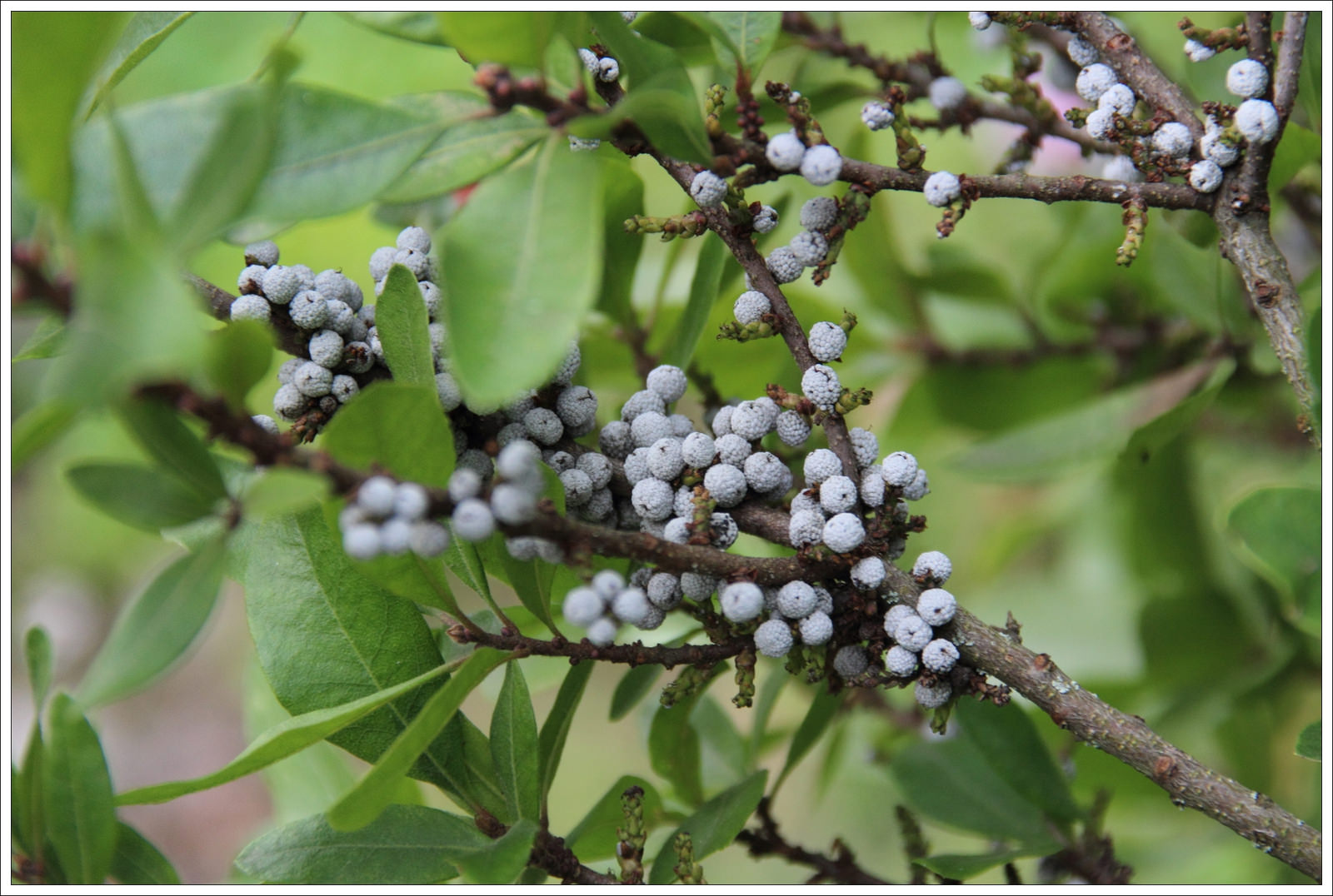
Allergy-Free Garden Shrub: Northern Bayberry
Myrica pensylvanica are tough winter hardy, semi-evergreen, native shrubs with an upright habit. They will grow to ten feet and often spread by suckers to form colonies. They are noted for their pretty silver berries in winter, their salt spray tolerance, and their adaptability to urban stresses and wet sites. If you live in the city or a coastal area this maybe one of the toughest and best outdoor plants to create a hedge for allergy sufferers.
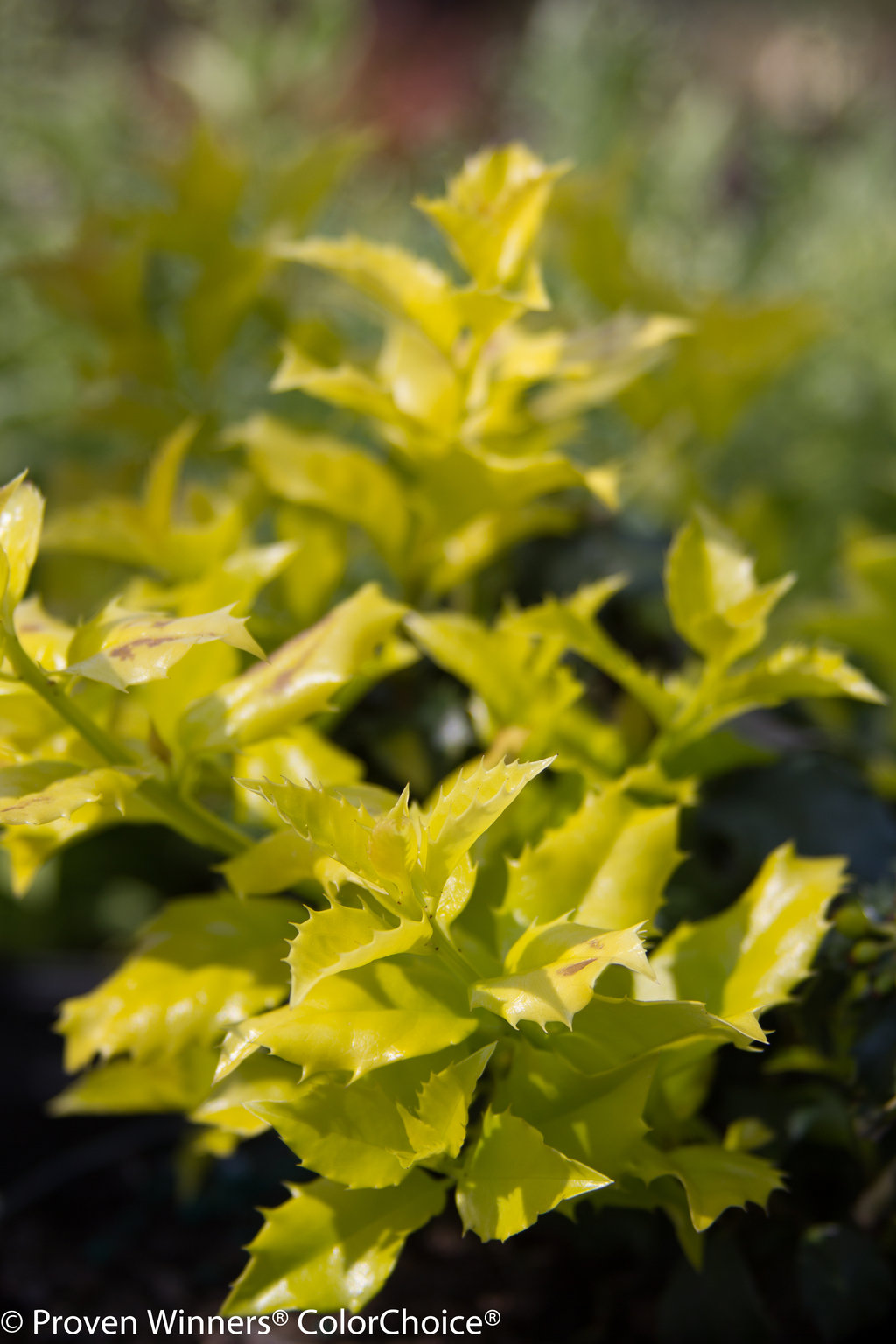
Female hollies
Ilex x meserveae var. (female) are generally desirable for their red fruit and they pose no allergenic threat. Many female varieties will not set fruit without the presence of a male plant which is considerably more allergenic (a 7 on the OPAL scale vs. a 1 for the females).
Only one male plant is needed for as many as 7-8 females, so placement can be strategic (to maintain your allergy free garden zone – consider planting the male on the backside of a hedge) to reduce allergy potential.
I am partial to the chartreuse color of Ilex x meserveae ‘Castle Gold’ but there are many other options as well.
images: Photo by Annie Spratt on Unsplash. Leonora Enking CC. Photo by Jason Leung on Unsplash. Courtesy of Proven Winners, Margrit CC, Maggie CC. Wendy Cutler CC. Photo by Chandra Oh on Unsplash. Photo by Carl Schlabach on Unsplash.
Related Allergy-Free Garden Posts:
Share this Post:
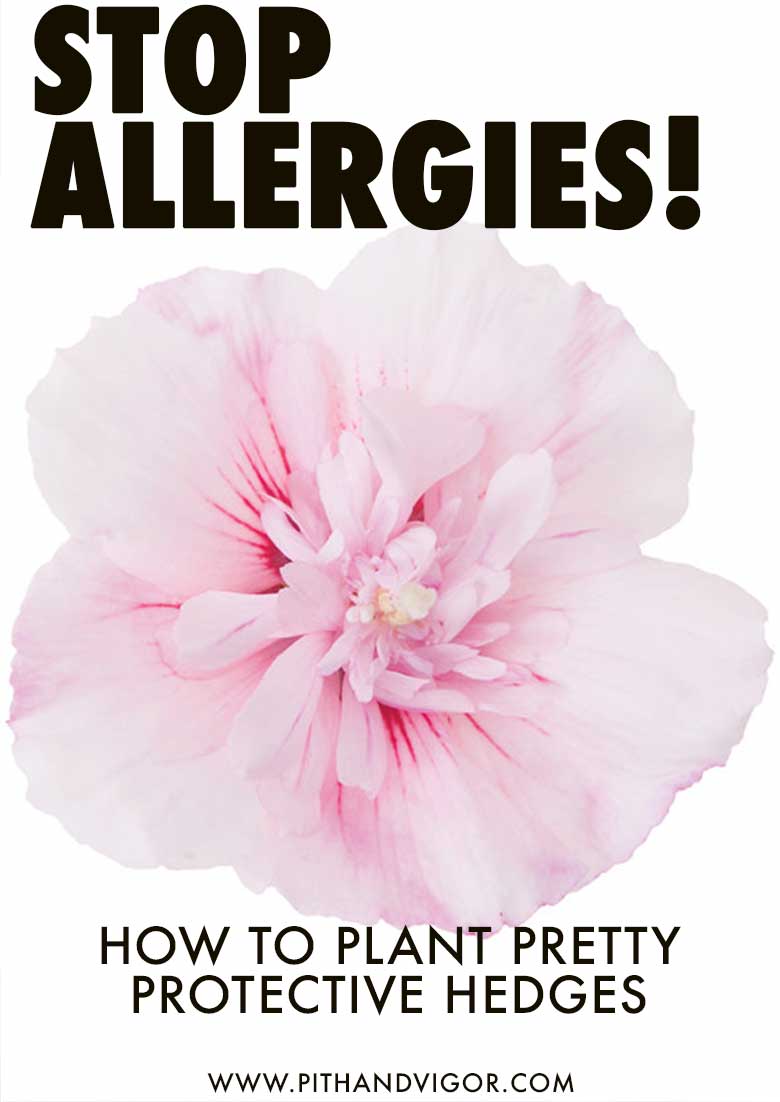
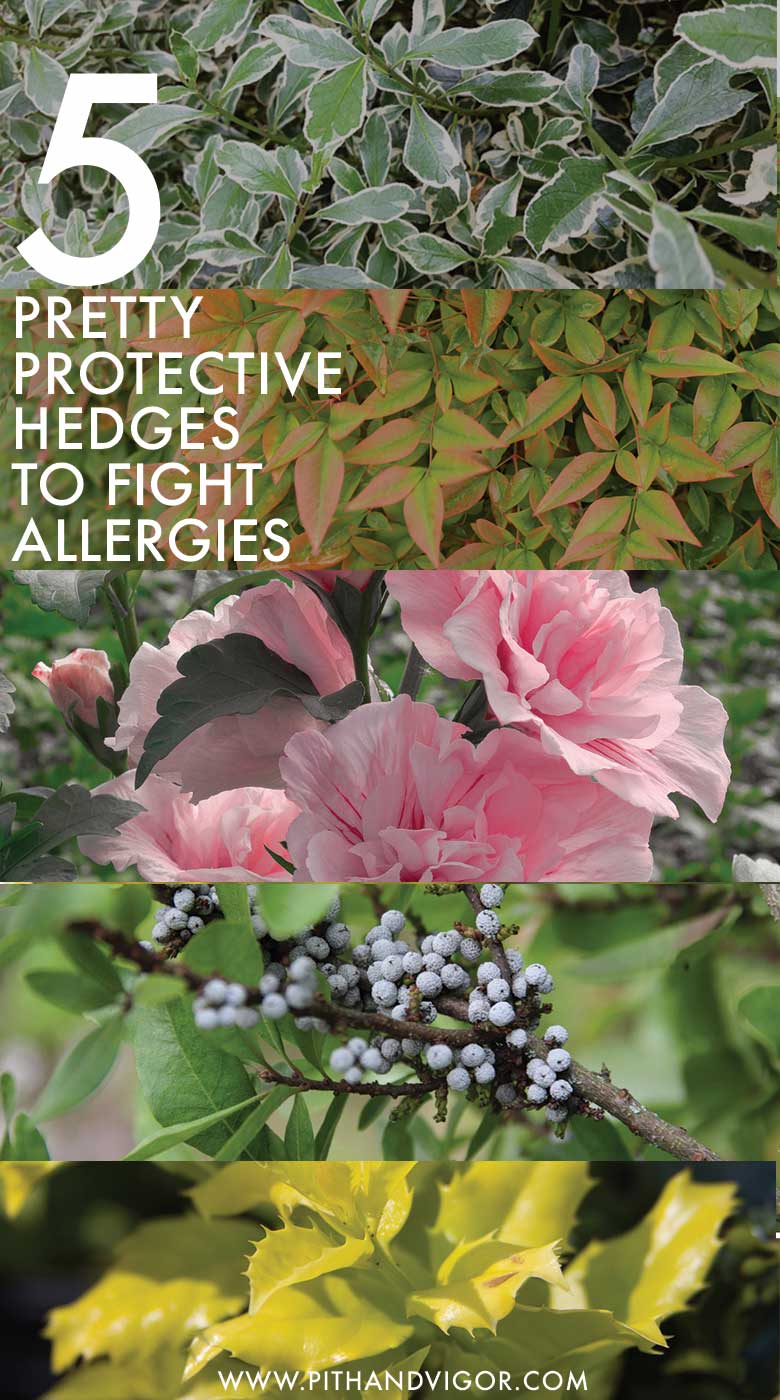
I would like to join in on your next webinar on garden make overs. Your sign up link doesn’t seem to be working.
Hi – Apologies for that – It is fixed now – Thank you for letting me know – Rochelle